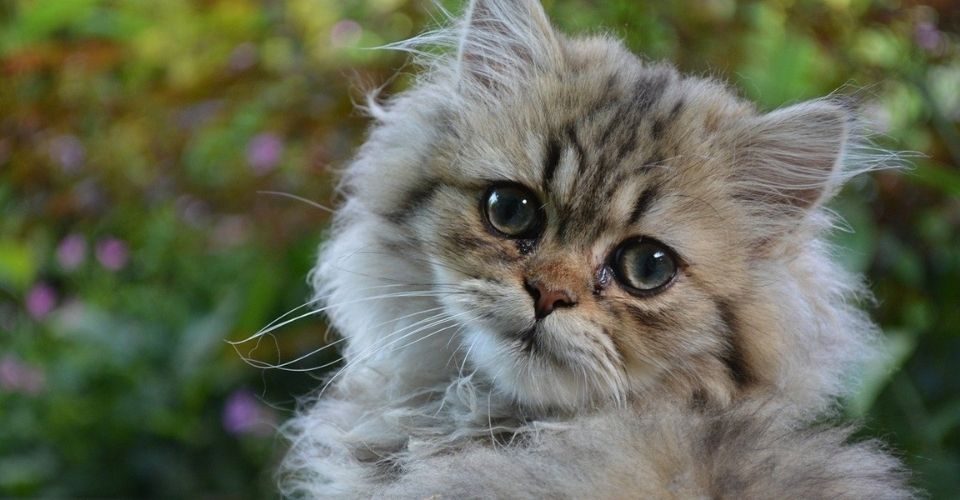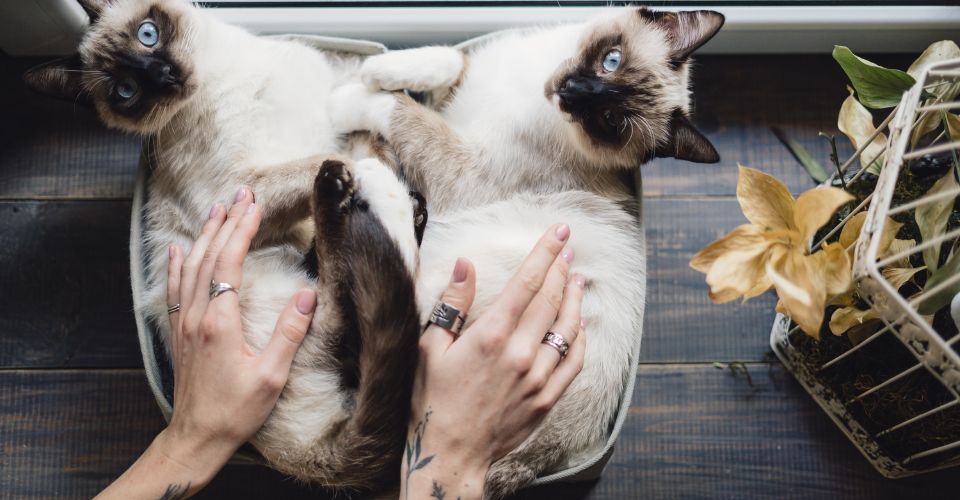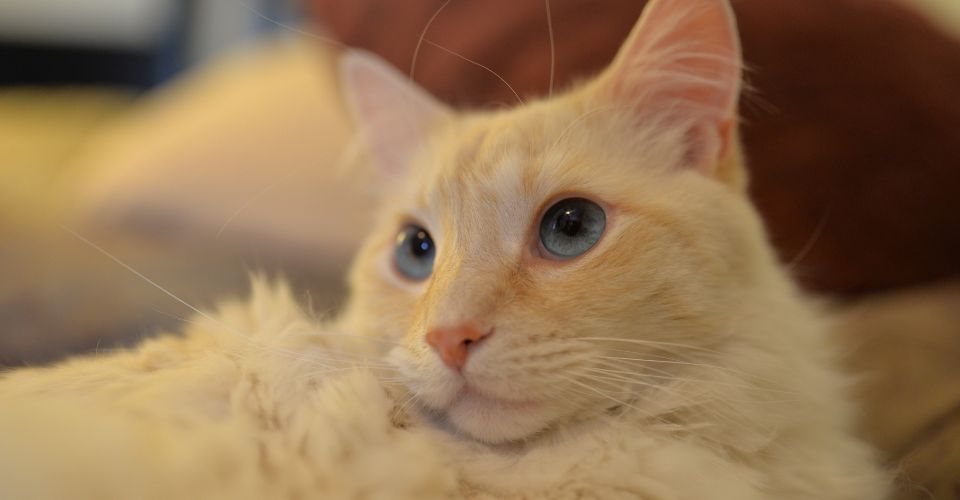Persian cats are the epitome of elegance with their snub noses, chubby cheeks, and long-flowing coats. Their glamorous looks combined with their sweet demeanor make them one of the most popular cat breeds among feline lovers. Persian cat makes a purr-fect lap warmer. That said, they won’t jump into anyone’s lap—warm snuggles in the lap are only reserved for their favorite persons.
Commanding an air of royalty, Persian cats never fail to charm the viewers. This is the reason that Persian cats are one of the most popular purebred cats across North America. Perhaps, Persian cat charm has worked on you as well, and now you are planning on bringing a Persian cat into your family.
Before you go and get yourself a Persian cat, we advise that you familiarize yourself with the cat breed to make sure that a Persian cat would be a perfect fit for you.
In this blog, we are going to discuss everything there is to know about the Persian cat breed: Persian cat history, personality, coat type, temperament, or if they shed or not, and much more.
Breed Overview
Weight: 7 to 12 pounds
Lifespan: 15 to 20 years
Coat Color: Variety of colors divided into seven divisions: solid, and golden, smoke and shaded, tabby, parti-color, and bicolor and Himalayan division
Shedding: Frequent
Temperament: Sociable, affectionate, calm, and sweet
Suitable for: Families with a clam and quiet household, calm and lazy parents
Persian Cat History
Persian cats have been purring and snuggling in the laps of feline lovers since the seventeenth century, but despite that, their history is a little murky. The Persian cat breed is thought to have been originated in the cradle of Mesopotamia civilization, which later came to be known as Persia, present-day Iran. The Persian cat breed was introduced to Europe only in the 14th century.
After coming to Europe, the Persian cat won the heart of feline lovers with its elegant looks and docile personality. Because of its popularity and exquisite look, Persian cat won the world’s first-ever cat show held in 1871. Carrying themselves with an air of royalty, Persian cat made their way into the royal palace when Queen Victoria adopted her.
After soaking up all the fame and glory in Europe, the Persian cat breed came across the Atlantic on the shores of America in the 19th century. After making its way to the United States, Persian cat quickly surpassed the Maine Coon, the only true native American cat breed, as American’s most favorite long-haired cat breed. According to the Cat Fancier’s Association (CFA), the Persian cat breed is the most popular in the United States and the fourth most popular breed across the world.
Persian Cat Personality
It is not just the royal looks of Persian cats that are charming the feline lovers across the world but also their loving and affectionate nature. Persian cats are easygoing, sweet, and gentle creatures. “The breed is very mellow and very quiet. They’re not necessarily active, especially once they’re older. They also tend to get tired very easily,” says Dr. Carlo Siracusa, who was once a Persian cat breeder. Persians are a medium-energy cat breed. They are active when they want, but most of the time, they like to just laze around—basking in the sunlight, snuggling in the lap of their loving parents, or just laying around in the company of their parents.
Persian Cat Coat
These Persian beauties have a gorgeous, delightfully soft, silky coat that feline enthusiasts adore. The hair on the cat collar, neck, chest, and shoulders are comparatively longer. The silky coat of Persians comes in all sorts of color combinations and patterns. For the purpose of competitions, the CFA has divided the coat color patterns of Persian cats into seven divisions.
Solid Division
For a Persian cat to be placed in this category, her coat must be free of markings or shadings of any kind. In this division, solid whites can have three different eye colors. While some have deep blue or brilliant copper eyes, others have one copper eye and the other blue.
Silver and Golden Division
This Persian cat division consists of golden, shaded silver, and chinchilla. The shaded silvers are considered the most ethereal of all the Persian cats. Chinchilla Persians have a white coat with black tipping evenly scattered all over the coat. A shaded silver Persian cat would have a black mantle with evenly scattered shading on the sides. These Persians also have matching tipping on their legs and face. Their tipping is a bit darker than that of chinchilla Persians. Golden Persians will either be shaded or chinchilla.
Smoke and Shaded Division
This Persian cat division includes shell and shaded cameo Persian cats with a white undercoat and red tipping. The smoke Persians come in six different colors: black, blue, cameo, cream, blue cream smoked, and smoke tortoiseshell. Sometimes, it may look like they have a solid coat, but you will notice a white undercoat if you look carefully.
Tabby Division
Persian cats also come in tabby coat patterns. In fact, you can have a tabby Persian cat in three different tabby patterns: mackerel, classic, and patched tabby pattern. You can recognize a tabby with a unique capital M-shaped marking on the forehead.
Parti-Color Division
The Parti-color Persian cat division includes tortoiseshell, chocolate tortoiseshell, lilac-cream, and blue cream Persian cats. Persian cats with any of these four colors will have brilliant copper eyes.
The Calico and Bicolor Division
This cat division includes Persian cats with calico, bi-colors, dilute calicos, tabby, and white, and smoke and whites colored coats. Except for the silver tabby with white that has bewitching hazel or green eyes, all Persian cats placed in this category have brilliant copper eyes.
Himalayan Division
Himalayan Persian cats are one of the most revered of all the Persians. They got their point coloring from Siamese cats. Himalayan Persians come in many different point colors: chocolate, seal, seal lynx, lilac, lilac-cream, lilac lynx, lilac-cream lynx blue, blue-cream, blue lynx, blue-cream lynx, red, cream tortie, red lynx, cream lynx, tortie lynx, chocolate-tortie, chocolate lynx, and chocolate-tortie lynx. All Persians placed in this category must have vivid blue eyes.
Are Persian Cats Hypoallergenic?
No, Persian cats are not hypoallergenic—they are the opposite of a hypoallergenic cat. So if you are allergic and thinking of adopting a Persian cat, we would advise you not to do so. Persian cats pose a huge risk of triggering allergies. But do not fret; there are many hypoallergenic cat breeds that you can choose a feline friend from.
Do Persian Cats Shed?
Yes, Persian cats shed a lot. A Persian cat generally sheds its entire coat twice a year. This will give you an idea of how much shedding we are talking about when saying “a lot of shedding.” Given that Persians shed so much, you will have to brush their coat every day.
Persian Cat Grooming
If you are thinking of bringing home a Persian cat, you should know that Persian cats are considered a high-maintenance cat breed. Grooming and caring for your Persian cat would be sort of your side hustle—you will have to brush their coat every day. Otherwise, their undercoat will knot and if the knots are brushed, they will turn into mats that will be pretty painful to remove. More so, Persian cats’ coats also do not lose the dirt and debris attached to their coats on their own. You will have to brush off the debris and dirt that get entangled in your furry friend’s coat. On some days, you might have to brush your cat coat more than once if they make a mess. While many cat brushes are available in the market, we advise you to use a double-sided brush like GoPets’ Professional Double Sided Pin & Bristle Brush for your Persian cat, which will untangle the knots easily if any in your Persian’s undercoat.
Professional Double Sided Pin & Bristle Brush for Dogs & Cats by GoPets Grooming Comb Cleans Pets Shedding

|
In addition to daily brushing their coat, you will also have to give the monthly baths. Monthly baths only if your Persian cat is staying all the time indoors. If you allow her to go outside and play on the lawn, where she may get herself dirty, you may have to give more frequent baths. Given that Persian Cats hate water bathing them would be a challenging task. But fret not, and check out our guide: How to Bathe Your Kitten in 7 Simple Steps.
Persian Cat’s Common Health Problems
The Persian cat is an overall healthy cat breed, but like other purebred cat breeds, they are also prone to a wide range of health issues. Most of the health issues in our Persian cats are related to their facial structure, but there could be other genetic health issues totally unrelated to their physical features. If you have a Persian cat in your home, you will have to be vigilant all the time, looking for signs of sickness. Below, we have discussed some of the most common diseases of Persian cats.
Hairballs
Dense long-haired, lustrous coats make Persian cats the most popular cat breed across the United States, but this long-haired coat also has many pitfalls. To begin with, Persians shed a lot and need a lot of grooming. If their coat is not brushed regularly, their fur will get matted. Moreover, Persian cats are also at a greater risk of experiencing hairballs as compared to other short-haired cat breeds.
Polycystic Kidney Disease
The chances of our Persian cats developing polycystic kidney disease are quite higher as compared to other cat breeds. Polycystic kidney disease is an inherited disorder in which small sacs filled with liquid develop in the tissues of our Persian cats’ kidneys.
Persian cat owners are advised never to miss an annual vet visit. During their annual vet visits, Persian cats should get ultrasounds so that if they are developing any kidney issue, it could be diagnosed and dealt with at earlier stages.
Respiratory Issues
One of the main features of Persian cats is their flat face. No doubt, the small snub nose of Persians makes them look cute and all, it also makes them susceptible to many serious health issues. Short noses mean a very small nasal passage, which affects cats’ breathing. The breathing difficulty is what makes our Persians a bit lackadaisical than other cat breeds. This also makes Persian cats more susceptible to heat, moisture, and cold environments.
Eye Problems
The bewitching eyes of Persian cats are also susceptible to many problems, such as congenital epiphora (excessive watering from cat-eye), ankyloblepharon (adhesion of upper eyelid with lower eyelid), entropion, and primary glaucoma.





